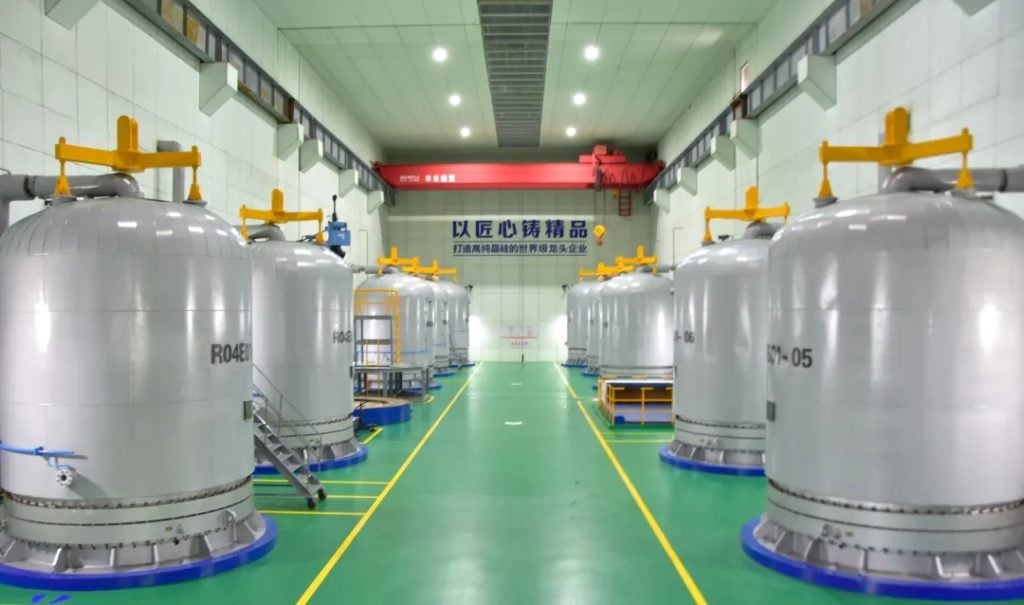
The solar polysilicon sector is experiencing a changing of the guard, and all four of the top manufacturers will be Chinese next year, research firm Bernreuter Research has predicted.
Publishing its ranking of the top ten polysilicon producers this week, Bernreuter Research has placed Tongwei at the top of its rankings in 2020, ousting German provider Wacker Chemie for the first time.
Unlock unlimited access for 12 whole months of distinctive global analysis
Photovoltaics International is now included.
- Regular insight and analysis of the industry’s biggest developments
- In-depth interviews with the industry’s leading figures
- Unlimited digital access to the PV Tech Power journal catalogue
- Unlimited digital access to the Photovoltaics International journal catalogue
- Access to more than 1,000 technical papers
- Discounts on Solar Media’s portfolio of events, in-person and virtual
Tongwei’s capacity is expected to reach nearly 200,000 MT by the end of this year before rising to 300,000 MT in 2023, continuing a rate of growth which has seen it soar from ninth position in 2016 to the top of Bernreuter’s ranking last year.
Daqo New Energy has meanwhile assumed the third-place spot from South Korea’s OCI, which tumbled down the rankings after shuttering its solar-grade polysilicon operations in South Korea last year.
While global demand for solar-grade polysilicon is soaring, Bernretuer has noted Wacker’s commitment to electronic-grade polysilicon and its intent to grow its market share in this segment rather than the more competitive solar polysilicon area. As a result, Wacker is expected to fall further down its league table to fifth position next year. It will be overtaken by three other Chinese mainstays – GCL-Poly, Daqo and Xinte Energy, with China’s share of the solar-grade polysilicon market set to near 90% in the coming years.
“The rise of China-based players in our ranking is exemplary for the increasing dominance of the Chinese polysilicon industry,” Johannes Bernreuter, head of Bernreuter Research, said.
The report also argues the need for markets outside of China to establish new manufacturing facilities – especially to accommodate for ingot and wafering needs – if they are to compete with Chinese supply in the long term.
“If [Western] countries don’t want to become almost completely dependent on solar products from China for the transition to renewable energy, they have to implement an effective and long overdue industrial policy for a non-Chinese solar supply chain,” Bernreuter said, noting low-cost renewable hydropower availability in the US, Canada, Norway and Malaysia as being potential locations.
The plausibility of establishing end-to-end manufacturing supply chains for solar products in Europe has long been debated but has been renewed amidst efforts in Europe to establish a “solar manufacturing renaissance”. These conversations form part of a wider economic recovery from the COVID-19 pandemic, but also stem from concerns over the alleged use of forced labour in supply chains in Xinjiang, accusations which polysilicon manufacturers in the region strenuously deny.
Earlier this week, the industry heard that up to €7 billion (US$8.5 billion) of capital investment could be required to scale up Europe’s module manufacturing supply chain in order to be globally competitive.
Meanwhile, polysilicon pricing volatility has continued, with this week’s spot prices for monocrystalline poly rising once again to an average of RMB164/kg (US$25.4/kg).






